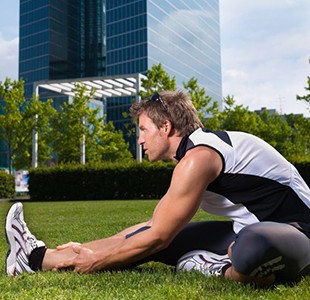
 Flexibility is developed when connective tissue and muscles are elongated through regular, proper stretching. In contrast, flexibilitydiminishes over time when these tissues are not stretched or exercised. Some of the many reasons why athletes should want to improve their flexibility through stretching exercises include; development of body awareness, increase an athletes learning and practice and performance of a skilled moved, reduce muscle soreness, increase athletes mental and physical relaxation.
Flexibility is developed when connective tissue and muscles are elongated through regular, proper stretching. In contrast, flexibilitydiminishes over time when these tissues are not stretched or exercised. Some of the many reasons why athletes should want to improve their flexibility through stretching exercises include; development of body awareness, increase an athletes learning and practice and performance of a skilled moved, reduce muscle soreness, increase athletes mental and physical relaxation.
Keep in mind stretching is only beneficial when done properly. Athletes need to make stretching a regular part of their training program and devote at least 10minutes to stretching each day to see results. Stretching gradually and slowly will help avoid injury. Just as there is more than one way to achieve a set goal, there is more than one way to enhance flexibility.
How the body responds to stretching:
Improved circulation – Stretching improves circulation of blood to the muscles and joints. Increased blood circulation, of course, brings nutrients to our cells and removes waste byproducts.
Better posture – Chronically tense and tight muscles contribute to poor posture, which in turn can affect the functioning of our internal organs, not to mention our appearance. Stretching the muscles of the lower back, shoulders and chest can help keep the back in better alignment and improve posture.
Relaxation and stress relief – Stretching, done properly, helps to relax tense muscles which result from stress. The feeling of relaxation brings a sense of well-being and relief from tension.
Reduce or prevent lower back pain – Greater flexibility and range of motion in the hamstrings and muscles of the hips and pelvis help to reduce the stress on your spine that causes lower back pain.
In my next post I will be discussing some of the controversy about stretching.

